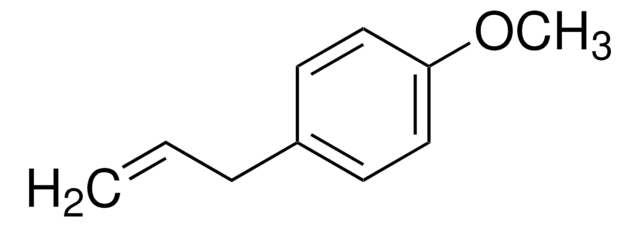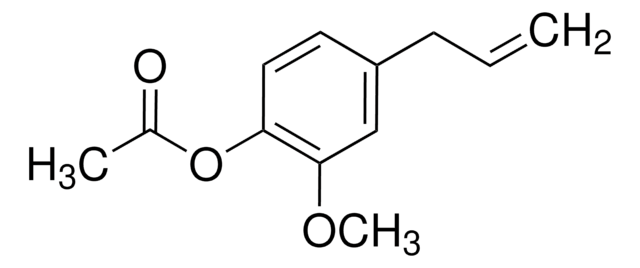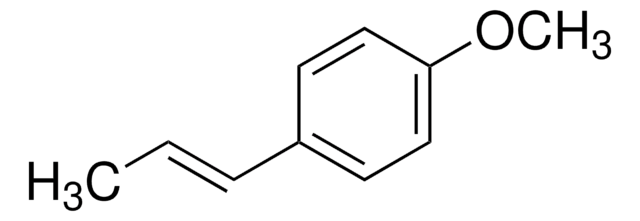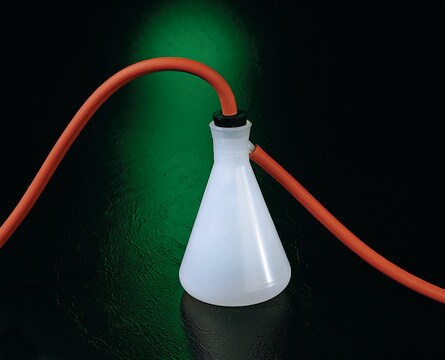Wichtige Dokumente
W241105
4-Allylanisol
≥98%, FCC
Synonym(e):
p-Allylphenylmethylether, Chavicol-methylether, Estragol, Isoanethol, Methylchavicol, p-Methoxyallylbenzol
About This Item
Halal
Kosher
Empfohlene Produkte
Biologische Quelle
synthetic
Qualitätsniveau
Qualität
Fragrance grade
Halal
Kosher
Agentur
follows IFRA guidelines
Einhaltung gesetzlicher Vorschriften
EU Regulation 1223/2009
FCC
FDA 21 CFR 117
FDA 21 CFR 172.515
Assay
≥98%
Zusammensetzung
Contains IFRA restricted 4-Allylanisole
Brechungsindex
n20/D 1.521 (lit.)
bp
215-216 °C (lit.)
Dichte
0.965 g/mL at 25 °C (lit.)
Anwendung(en)
flavors and fragrances
Dokumentation
see Safety & Documentation for available documents
Nahrungsmittelallergen
no known allergens
Allergener Duftstoff
no known allergens
Organoleptisch
anise; green; spicy; herbaceous; minty; sweet
SMILES String
COc1ccc(CC=C)cc1
InChI
1S/C10H12O/c1-3-4-9-5-7-10(11-2)8-6-9/h3,5-8H,1,4H2,2H3
InChIKey
ZFMSMUAANRJZFM-UHFFFAOYSA-N
Suchen Sie nach ähnlichen Produkten? Aufrufen Leitfaden zum Produktvergleich
Verwandte Kategorien
Haftungsausschluss
Signalwort
Warning
Gefahreneinstufungen
Acute Tox. 4 Oral - Aquatic Chronic 3 - Carc. 2 - Eye Irrit. 2 - Muta. 2 - Skin Irrit. 2 - Skin Sens. 1
Lagerklassenschlüssel
10 - Combustible liquids
WGK
WGK 2
Flammpunkt (°F)
177.8 °F - closed cup
Flammpunkt (°C)
81 °C - closed cup
Persönliche Schutzausrüstung
Eyeshields, Faceshields, Gloves, type ABEK (EN14387) respirator filter
Hier finden Sie alle aktuellen Versionen:
Besitzen Sie dieses Produkt bereits?
In der Dokumentenbibliothek finden Sie die Dokumentation zu den Produkten, die Sie kürzlich erworben haben.
Kunden haben sich ebenfalls angesehen
Unser Team von Wissenschaftlern verfügt über Erfahrung in allen Forschungsbereichen einschließlich Life Science, Materialwissenschaften, chemischer Synthese, Chromatographie, Analytik und vielen mehr..
Setzen Sie sich mit dem technischen Dienst in Verbindung.











